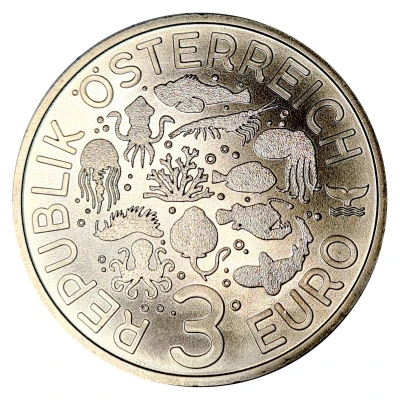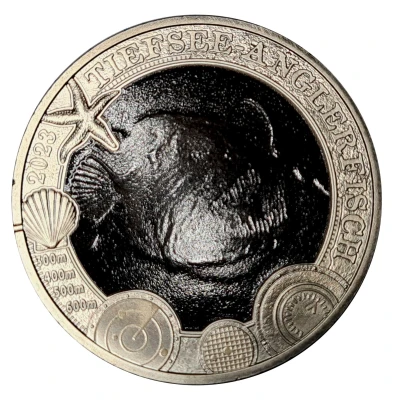


© papilio (CC BY-NC-SA)
3 Euros Deep-sea Anglerfish
2023 year| Copper-nickel | 16 g | 34 mm |
| Issuer | Austria |
|---|---|
| Period | Second Republic (1945-date) |
| Type | Non-circulating coin |
| Year | 2023 |
| Value | 3 Euros 3 EUR = USD 3.31 |
| Currency | Euro (2002-date) |
| Composition | Copper-nickel |
| Weight | 16 g |
| Diameter | 34 mm |
| Shape | Round |
| Technique | Milled, Coloured |
| Orientation | Medal alignment ↑↑ |
| Updated | 2024-10-04 |
| Numista | N#379603 |
|---|---|
| Rarity index | 53% |
Reverse
DEEP-SEA ANGLERFISH
Script: Latin
Lettering:
TIEFSEE-ANGLERFISCH
2023
300m
400m
500m
600m
Designers: Kathrin Kuntner, Rebecca Wilding
Edge
Reeded
Comment
As dark and scary as the deep blue sea itself, a black coin like the Deep-sea Anglerfish has never been seen before. When illuminated with ultraviolet light its secret is revealed as you come face to face with a scary sea monster. A highlight of Luminous Marine Life, the fourth coin in the 3 euro series is more than worthy of a sea creature that could not be more extraordinary.With a spherical body, large head and a mouth packed with sharp teeth, deep-sea anglerfish are bizarre-looking creatures found below a depth of 300 metres in all the world's oceans. With a body length of between 6 centimetres and 1.2 metres, it is amazing how much larger the female is than the male, which tends to reach only a few centimetres in length.
To catch their prey, female deep-sea anglerfish are equipped with a ‘fishing rod’ (illicium) and attached ‘lure’ (esca), which is usually equipped with a luminescent organ. The internal structure of the esca is complex and includes a bewildering variety of vesicles filled with luminescent bacteria. In addition to the esca’s luminescent organ, all species of the genus Linophryne possess a light-producing barbel on the hyoid bone. However, the barbel’s light does not come from light-producing bacteria but from a photogenic granulate lying between the cells. The independent development of two different light-producing mechanisms in this genus is unique in the natural world.